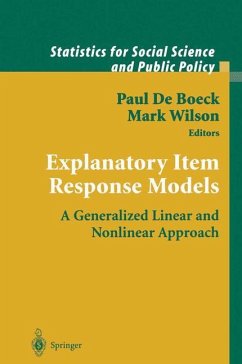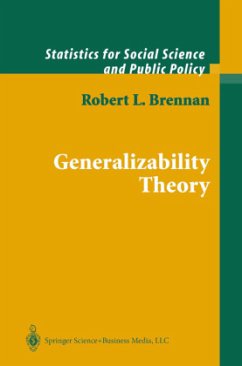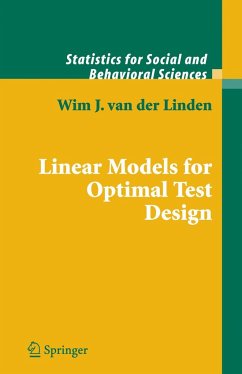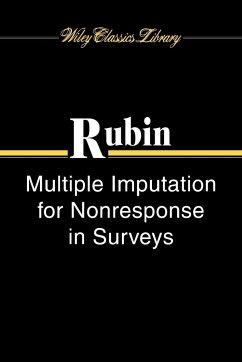Nicht lieferbar

The Kernel Method of Test Equating
Versandkostenfrei!
Nicht lieferbar
Kernel Equating (KE) is a powerful, modern and unified approach to test equating. It is based on a flexible family of equipercentile-like equating functions and contains the linear equating function as a special case. Any equipercentile equating method has five steps or parts. They are: 1) pre-smoothing; 2) estimation of the score-probabilities on the target population; 3) continuization; 4) computing and diagnosing the equating function; 5) computing the standard error of equating and related accuracy measures. KE brings these steps together in an organized whole rather than treating them as disparate problems.
KE exploits pre-smoothing by fitting log-linear models to score data, and incorporates it into step 5) above. KE provides new tools for diagnosing a given equating function, and for comparing two or more equating functions in order to choose between them. In this book, KE is applied to the four major equating designs and to both Chain Equating and Post-Stratification Equating for the Non-Equivalent groups with Anchor Test Design.
This book will be an important reference for several groups: (a) Statisticians and others interested in the theory behind equating methods and the use of model-based statistical methods for data smoothing in applied work; (b) Practitioners who need to equate tests—including those with these responsibilities in testing companies, state testing agencies and school districts; and (c) Instructors in psychometric and measurement programs. The authors assume some familiarity with linear and equipercentile test equating, and with matrix algebra.
From the reviews:
"The book is nicely laid out, is extremely well written, and is an excellent text for a semester course or a short course...The book is highly recommended." Short Book Reviews of the International Statistical Institute, December 2004
"This book is well-written and the presentation is clear, rigorous, and concise...A rich set of applications is used to illustrate the methods...This book is a gem! I highly recommend it to any statistician or psychometrician who has even a passing interest in test equating." Pscyhometrika, March 2006
"This is a great book, and it is the first to focus on the kernel method of test equating." Applied Psychological Measurement, September 2005
KE exploits pre-smoothing by fitting log-linear models to score data, and incorporates it into step 5) above. KE provides new tools for diagnosing a given equating function, and for comparing two or more equating functions in order to choose between them. In this book, KE is applied to the four major equating designs and to both Chain Equating and Post-Stratification Equating for the Non-Equivalent groups with Anchor Test Design.
This book will be an important reference for several groups: (a) Statisticians and others interested in the theory behind equating methods and the use of model-based statistical methods for data smoothing in applied work; (b) Practitioners who need to equate tests—including those with these responsibilities in testing companies, state testing agencies and school districts; and (c) Instructors in psychometric and measurement programs. The authors assume some familiarity with linear and equipercentile test equating, and with matrix algebra.
From the reviews:
"The book is nicely laid out, is extremely well written, and is an excellent text for a semester course or a short course...The book is highly recommended." Short Book Reviews of the International Statistical Institute, December 2004
"This book is well-written and the presentation is clear, rigorous, and concise...A rich set of applications is used to illustrate the methods...This book is a gem! I highly recommend it to any statistician or psychometrician who has even a passing interest in test equating." Pscyhometrika, March 2006
"This is a great book, and it is the first to focus on the kernel method of test equating." Applied Psychological Measurement, September 2005













